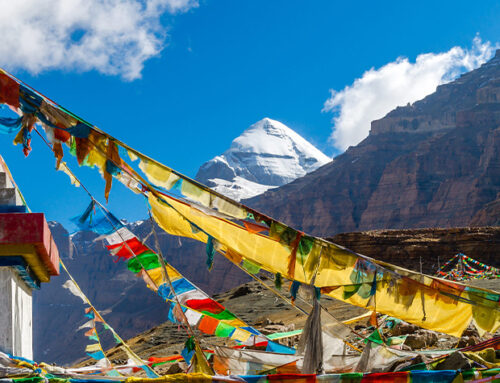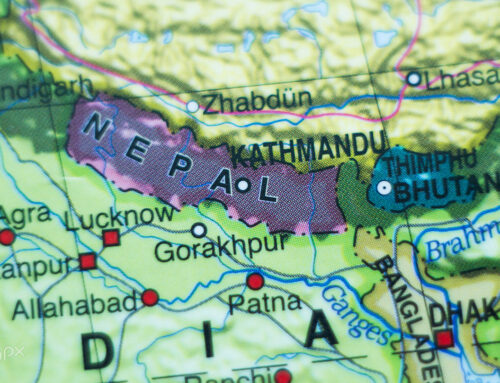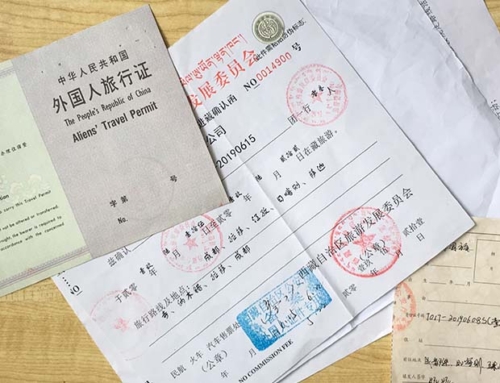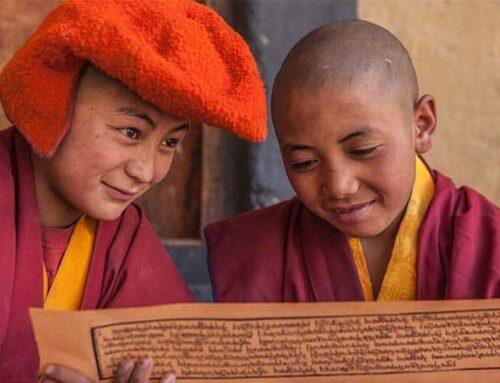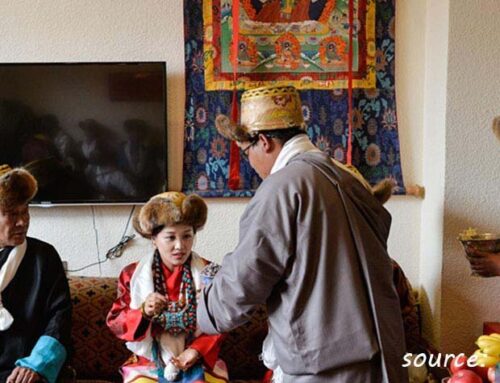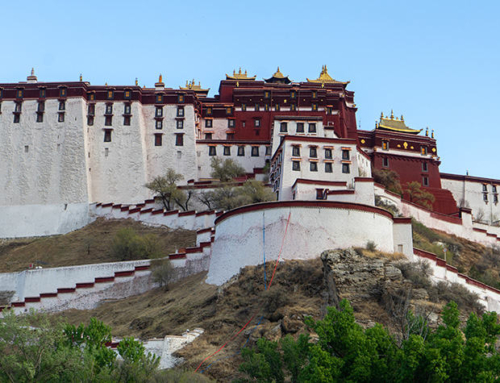Mahakala, a formidable and revered deity in both Hinduism and Buddhism, embodies the essence of time, destruction, and protection. In this comprehensive article, we delve into the multifaceted aspects of Mahakala, exploring his significance, different forms, and the roles he plays in these two major religions. From his roots in the pantheon of Hindu deities as a fierce manifestation of Lord Shiva to his role as the sacred Dharmapala in Buddhism, Mahakala is a deity steeped in symbolism and deep spiritual meaning.

The Origin and Significance of Mahakala
Mahakala in Hinduism
In Hinduism, Mahakala is a formidable deity, known as a fierce manifestation of Lord Shiva. His significance in this religion is deeply rooted in the understanding of divine forces. Several key aspects of Mahakala's presence are highlighted:
Mahakala as Shiva's Fierce Manifestation
Mahakala is regarded as a fierce embodiment of Lord Shiva's divine power. Shiva, one of the principal deities in Hinduism, embodies both the creative and destructive forces of the universe. Mahakala represents the destructive aspect, signifying the power to annihilate and transform, often associated with the destruction of impediments and obstacles in one's spiritual path.
His Consort: Goddess Mahakali
Mahakala is often depicted alongside his consort, Goddess Mahakali. Mahakali is a formidable and fierce deity herself, and their union symbolizes the balance of masculine and feminine energies, creating a harmonious and all-encompassing divine force. This consortship emphasizes the interdependence of creation and destruction in the cycle of existence.
The Kalikula Sect of Shaktism
Within the broader Shaktism tradition, Mahakala finds a significant place in the Kalikula sect. This particular sect venerates Goddess Kali and her various manifestations, including Mahakala. The Kalikula sect places emphasis on the worship of powerful and fierce deities, signifying the transformative and protective aspects of the divine.
Mahakala in Buddhism
In Buddhism, Mahakala takes on a different role and significance. He is regarded as a sacred Dharmapala, the "Protector of the Dharma." His presence in Buddhism reflects the importance of preserving the teachings of the Buddha and safeguarding practitioners along their spiritual journey.
Dharmapala: Protector of the Dharma
In Buddhism, Mahakala is revered as a guardian of the Dharma, which encompasses the teachings and principles of Buddhism. As a Dharmapala, he is tasked with protecting and upholding the Buddha's teachings, ensuring they remain pure and uncorrupted. Mahakala is seen as the guardian against external and internal obstacles that may hinder a practitioner's path to enlightenment.
A Guardian Deity in Tibetan Buddhism
Within Tibetan Buddhism, Mahakala is especially prominent as a guardian deity. Various schools and lineages of Tibetan Buddhism turn to him for protection and guidance. His fierce appearance and attributes represent his unwavering commitment to shield practitioners from adversity, both in the physical and spiritual realms.
Mahakala's Iconic Crown of Five Skulls
One of the distinctive features of Mahakala's iconography is his crown, which is adorned with five skulls. These skulls symbolize the transmutation of the five negative afflictions (kleśās) into the five wisdoms. This transformation signifies the potential for enlightenment and the transcending of the hindrances and delusions that obstruct one's path toward spiritual awakening.
The Complex Forms of Mahakala
Two-armed Black Mahakala
Mahakala appears in various forms, each with distinct attributes and roles. One of these forms is the Two-armed Black Mahakala, characterized by his unique characteristics and functions:
Protector of the Karma Kagyu School
The Two-armed Black Mahakala is highly regarded as the protector of the Karma Kagyu school, a major lineage of Tibetan Buddhism. This form of Mahakala plays a crucial role in safeguarding the teachings and practices of the Karma Kagyu tradition, ensuring that they remain uncorrupted and accessible to practitioners.
Terma Origins and Karma Kagyu Adoption
The origins of the Two-armed Black Mahakala can be traced to terma, which are hidden treasures of teachings and artifacts in Tibetan Buddhism. This particular form of Mahakala was adopted by the Karma Kagyu lineage, specifically during the time of Karma Pakshi, the 2nd Karmapa Lama. It exemplifies the lineage's commitment to preserving the purity of their spiritual heritage.
Four-armed Mahakala
Another significant form of Mahakala is the Four-armed Mahakala, with its distinctive attributes and influence within Tibetan Buddhism:
Primary Protector of Various Tibetan Buddhist Lineages
The Four-armed Mahakala is considered the primary protector for several Tibetan Buddhist lineages, including the Karma Kagyu, Drikung Kagyu, Drukpa Lineage, and the Nyingma tradition. His role as a guardian deity extends to a broad spectrum of practitioners, ensuring their safety and guidance on the spiritual path.
The Dzogchen Connection
While the Four-armed Mahakala is revered across various Tibetan Buddhist lineages, it holds a specific connection to the Dzogchen teachings. Dzogchen, also known as the Great Perfection, represents the highest and most profound teachings in Tibetan Buddhism. The Four-armed Mahakala serves as a significant protector of these teachings, preserving their authenticity and integrity.
Six-armed Mahakala
The Six-armed Mahakala is another remarkable form of Mahakala, known for its unique symbolism and roles in different traditions:
A Manifestation of Avalokiteshvara
The Six-armed Mahakala is considered a manifestation of Avalokiteshvara, the Bodhisattva of Compassion. This form of Mahakala embodies the compassionate qualities of Avalokiteshvara while also representing the fierce and protective aspects associated with Mahakala.
The Symbolism of His Six Arms
The Six-armed Mahakala is distinguished by its six arms, each holding specific attributes and implements. These arms signify the successful completion of the six paramitas, or perfections, which are integral to the path of a Bodhisattva. These perfections include generosity, ethics, patience, vigor, meditation, and wisdom.
The White Six-Armed Mahakala in Mongolian Gelugpa
Among the variations of the Six-armed Mahakala, the White Six-Armed Mahakala is particularly popular among Mongolian Gelugpas. This form represents the embodiment of purity, wisdom, and the eradication of obstacles. It is a revered and prominent figure in this specific Tibetan Buddhist tradition.
The Symbolism and Roles of Mahakala
The Fierce Appearance
One of the most striking aspects of Mahakala is his fierce appearance, which is loaded with symbolism and significance:
The Trampling of Obstacles
In his fierce manifestation, Mahakala is often depicted trampling over obstacles, symbolizing his role as the destroyer of impediments. This visual representation signifies his ability to remove hindrances and challenges on the path to spiritual realization, allowing practitioners to overcome difficulties and advance on their journey.
The Flaying Knife and Skull Cup
Mahakala typically wields a flaying knife and a skull cup filled with blood. The flaying knife represents the cutting through of negative patterns, such as aggression, hatred, and ignorance. It symbolizes the process of severing attachments to worldly desires and delusions. The skull cup filled with blood is a powerful metaphor for transformation and the transmutation of negativity into enlightenment.
The Significance of the Gandi Gong
One of the distinctive attributes of Mahakala is the gandi gong, which he holds in the crooks of his elbows. The gong is a symbol of his vow to protect the community of monks (sangha) and practitioners. It underscores his commitment to safeguarding those who follow the path of the Dharma, ensuring their spiritual progress and safety.
Mahakala's Companions
Mahakala is often depicted alongside various companions who play significant roles in his iconography and symbolism:
Palden Remati and Palden Lhamo
To the left of Mahakala, one can find his principal companions, Palden Remati and Palden Lhamo. These two deities represent different aspects of the protective force that Mahakala embodies. Palden Remati and Palden Lhamo, in their fierce forms, assist Mahakala in his protective duties, ensuring the well-being of those who seek his guidance.
Legden Nagpo and Bhutadamara
To the right of Mahakala, we encounter Legden Nagpo and Bhutadamara, further companions who assist in the protective roles that Mahakala undertakes. They represent different aspects of the transformative and powerful presence of Mahakala.
Brahmarupa and the Thighbone Trumpet
Rounding out the ensemble of deities is Brahmarupa, who is often depicted blowing a thighbone trumpet, adding a unique element to the symbolism:
Ritual Instruments in Tibetan Buddhism
The thighbone trumpet is a key ritual instrument in Tibetan Buddhism, often used in ceremonial practices. In this context, it signifies the connection between Mahakala's fierce and protective nature and the rituals that practitioners engage in to invoke his guidance and safeguarding presence.
These symbolic elements and companions of Mahakala contribute to the profound layers of meaning associated with this deity, making his worship and reverence a significant aspect of Tibetan Buddhist practice.
The Influence and Reverence for Mahakala
Brahmarupa and the Thighbone Trumpet
The Sakya Order's Devotion
Mahakala holds a special place within the Sakya order, and his influence and reverence extend deeply within this particular Tibetan Buddhist tradition:
The Sakya order has a profound devotion to Mahakala, regarding him as a guardian and protector of their teachings and spiritual practices. Mahakala's fierce form aligns with the Sakya tradition's commitment to upholding and preserving the purity of their lineage. His presence is integral to their daily rituals, ensuring the protection and guidance of their practitioners along their spiritual journey.
Historical Significance and Influence on Art
Mahakala's historical significance goes beyond spiritual devotion and has also made a notable impact on Tibetan art:
Murals in the Kumbum at Gyantse Monastery
One of the most remarkable instances of Mahakala's influence on art can be observed in the murals preserved within the Kumbum at Gyantse Monastery in central Tibet. These murals, believed to have been created under the direction of Newari artists, depict the intricate and grandiose representation of Mahakala and his various forms.
The Kumbum at Gyantse Monastery is a testament to the enduring influence of Mahakala in Tibetan culture and artistic expression. The murals reflect the deep reverence and veneration that this deity has garnered over the centuries. They serve as a visual reminder of the importance of Mahakala as a guardian and protector in Tibetan Buddhism, as well as the cultural and artistic significance that surrounds his presence.
Conclusion
In the vast tapestry of religious and spiritual traditions, Mahakala stands as a unique and formidable figure. His significance spans across both Hinduism and Buddhism, where he holds a prominent place in the hearts and practices of devotees. The multifaceted symbolism, the diversity of his forms, and the vital protective roles he assumes, all contribute to his central position in these venerable traditions.
Whether revered as the fierce embodiment of Lord Shiva, the destroyer of obstacles and the keeper of the divine balance, or as the sacred Dharmapala in Tibetan Buddhism, Mahakala's unwavering presence continues to inspire deep devotion and reverence among practitioners. His fierce appearance and the accompanying symbolism signify the unyielding commitment to safeguard the spiritual journey and preserve the teachings and principles of these ancient and profound faiths.
Mahakala's legacy endures through the ages, reflecting the enduring power of spirituality, the strength of devotion, and the intricate tapestry of symbolism and roles that continue to influence and inspire the faithful.
FAQs (Frequently Asked Questions)
What Does Mahakala Symbolize in Hinduism?
In Hinduism, Mahakala stands as a profound embodiment of divine power and symbolism. Here, Mahakala represents the ultimate destructive force associated with Lord Shiva, one of the principal deities in the Hindu pantheon. At the core of his symbolism, Mahakala signifies the relentless force responsible for the dissolution of the universe.
Mahakala's presence in Hinduism is a testament to the multifaceted nature of divinity in this rich spiritual tradition. As an aspect of Lord Shiva, Mahakala embodies the power to dissolve not only time and space but the entire cosmos itself. He signifies the unyielding, unapologetic force of destruction, which is inherent in the natural cycle of creation and dissolution.
Within the theological framework of Hinduism, Mahakala serves as a reminder of the impermanence of all things and the ever-turning wheel of existence. While his fierce countenance may evoke awe and even fear, his role in the grand design of the universe is essential. Mahakala, in Hinduism, symbolizes the cosmic dance of destruction and creation, underscoring the cyclical and eternal nature of existence.
What is the role of Mahakala in Tibetan Buddhism?
Tibetan Buddhism reveres Mahakala as a crucial guardian deity, and his role is of profound significance within this spiritual tradition. At the heart of Tibetan Buddhism, Mahakala stands as a sentinel, protecting the Dharma—the teachings of the Buddha—and practitioners from a multitude of obstacles and challenges.
Mahakala's role as a guardian deity is multifaceted and profound. He is the vigilant protector of the Dharma, ensuring that the sacred teachings remain pure, uncorrupted, and accessible to practitioners. This guardianship extends to the practitioners themselves, offering guidance, safeguarding their spiritual journey, and helping them overcome the obstacles they may encounter along the path.
Within the tapestry of Tibetan Buddhism, Mahakala's fierce appearance and his unwavering commitment to safeguarding the spiritual path are emblematic of the challenges and tribulations that practitioners may face. His presence signifies the formidable force that stands by their side, offering both protection and guidance in the face of adversity.
As a guardian deity, Mahakala embodies the essential concept of the spiritual journey—the necessity of protection and guidance along the path to enlightenment. His role serves as a reminder of the challenges that one may encounter on the journey, while instilling the faith and assurance that, with Mahakala's protection, the path can be traversed with greater ease and confidence.
Why Does Mahakala Often Have Multiple Arms in His Depictions?
The depictions of Mahakala frequently feature multiple arms, a distinctive characteristic that holds profound symbolism and significance. These additional arms represent a range of attributes and qualities, each contributing to the multifaceted nature of this guardian deity.
The primary reason behind Mahakala's multiple arms is to symbolize his extraordinary powers. Each arm is laden with symbolism, embodying different qualities and abilities. Among these attributes, the power to overcome obstacles and ignorance stands prominently.
The multiple arms of Mahakala signify his capability to simultaneously address diverse challenges and hurdles that practitioners might face on their spiritual journey. This abundance of arms represents his boundless compassion and unwavering commitment to assist those who seek his protection. With these many arms, Mahakala can swiftly and comprehensively respond to the needs and aspirations of his devotees.
Moreover, the symbolism of the additional arms is deeply rooted in the concept of Buddhist wisdom. Mahakala's arms signify his mastery of the six paramitas, which are essential virtues cultivated on the path to enlightenment. These paramitas include generosity, ethical conduct, patience, vigor, meditation, and wisdom. Mahakala, through his many arms, embodies the successful completion of these virtues, serving as an inspiration and guide for practitioners striving to attain spiritual mastery.
In essence, the multiple arms in Mahakala's depictions serve as a powerful visual reminder of his all-encompassing nature and his ability to help followers surmount the obstacles and ignorance that may impede their spiritual progress. It is a testament to his ceaseless dedication to the welfare of those who call upon his protection and guidance.
How Is Mahakala's Appearance Described in the Article?
In the article, Mahakala's appearance is vividly depicted as fierce and awe-inspiring. He is typically represented with striking and distinctive attributes that convey his formidable nature. The visual portrayal of Mahakala encompasses several key elements:
Mahakala is often depicted as having a fierce appearance. This demeanor reflects his role as a guardian deity who possesses the power to confront and vanquish obstacles and challenges on the spiritual path. His fierce countenance evokes a sense of awe and respect, emphasizing his role as a powerful protector.
One of the prominent features of Mahakala's depiction is his act of trampling over obstacles. This symbolizes his function as the destroyer of impediments. It signifies his ability to remove hindrances and difficulties that may obstruct the progress of practitioners on their spiritual journey.
Another significant element in Mahakala's portrayal is his holding of a flaying knife. This implement represents the cutting through of negative patterns, such as aggression, hatred, and ignorance. It serves as a metaphor for severing attachments to worldly desires and delusions.
Additionally, Mahakala is often depicted holding a skull cup filled with blood. This visual symbolizes the transformative power of transmutation. It signifies the process of converting negativity into enlightenment and serves as a potent reminder of the potential for spiritual growth and transformation.
In summary, Mahakala's appearance, as described in the article, underscores his fierce countenance and the presence of symbolic elements, including the act of trampling over obstacles, the flaying knife, and the skull cup filled with blood. These aspects collectively convey his role as a guardian deity who removes impediments and facilitates spiritual growth.
Why is Mahakala Especially Revered by the Sakya Order?
Within the intricate tapestry of Tibetan Buddhism, Mahakala holds a particularly esteemed place within the Sakya Order, where he is revered with profound devotion and veneration. The Sakya Order's special connection with Mahakala can be attributed to several key factors:
Primary Protector: Mahakala is considered one of the primary protectors and guardians of the Sakya Order's sacred traditions. His fierce appearance and unwavering commitment to safeguarding the teachings align perfectly with the Sakya tradition's emphasis on preserving the purity and integrity of their lineage. As a primary protector, Mahakala plays a pivotal role in ensuring that the Sakya Order's spiritual practices and teachings remain uncorrupted and accessible to practitioners.
Spiritual Guidance: Mahakala's presence offers spiritual guidance and protection to Sakya practitioners. In the face of the various obstacles and challenges encountered on the spiritual path, Mahakala stands as a powerful and vigilant companion. He assists practitioners in navigating these challenges and serves as a source of strength and resilience.
A Symbol of Devotion: The Sakya Order's deep devotion to Mahakala reflects their unwavering commitment to their spiritual journey. Mahakala's fierce countenance serves as a reminder of the challenges and tribulations that practitioners may encounter. Through their devotion to him, Sakya followers demonstrate their trust in Mahakala's protective presence, reinforcing their determination to persevere on the path to enlightenment.
In essence, Mahakala's special reverence within the Sakya Order stems from his pivotal role as a primary protector and guardian of their traditions. His fierce and protective nature resonates deeply with the Sakya tradition's commitment to preserving the purity of their lineage, guiding practitioners, and instilling a profound sense of devotion on their spiritual journey.
Why is Mahakala Especially Revered by the Kagyu Order?
The Kagyu Order, a prominent school within Tibetan Buddhism, holds a deep and abiding reverence for Mahakala, recognizing him as a primary protector and guardian of their cherished traditions. Several compelling reasons contribute to Mahakala's special reverence within the Kagyu Order:
Primary Protector: Mahakala is celebrated as one of the primary protectors and guardians of the Kagyu Order's spiritual lineage and practices. His role as a protector is deeply intertwined with the Kagyu tradition's commitment to safeguarding the teachings of their lineage. Mahakala's fierce and unwavering commitment resonates with the Kagyu Order's emphasis on maintaining the purity and integrity of their spiritual heritage.
Terma Origins: Mahakala's presence and significance within the Kagyu Order can be traced back to terma (hidden treasure teachings). These terma texts, discovered by visionary spiritual masters, include teachings and practices related to Mahakala. His adoption as a protector deity within the Kagyu tradition is a testament to his significance in the terma lineage and his enduring relevance in guiding practitioners.
Connection to Karma Kagyu: Mahakala is often thought of as the main protector of the Karma Kagyu school, a significant branch of the Kagyu Order. Within the Karma Kagyu lineage, Mahakala's presence is particularly prominent and influential. His role as a protector extends to the spiritual well-being of the Karma Kagyu practitioners, fostering a deep sense of devotion and trust.
Mahakala's presence within the Kagyu Order is a reflection of the symbiotic relationship between a spiritual tradition and its guardian deity. His fierce appearance signifies the challenges and obstacles that practitioners may encounter on their spiritual journey, while his protective role underscores the unwavering commitment to guiding and preserving the Kagyu Order's profound teachings and practices. In essence, Mahakala's special reverence within the Kagyu Order underscores his integral role in upholding and nurturing the spiritual heritage of this tradition.
About Tibet Travel & Tours
Tibet Travel & Tours is a local travel agency in Tibet that offers unique and authentic experiences to travelers from all around the world. As a leading tour operator in Tibet, we provide high-quality Tibet Travel services that are tailored to our clients' needs and preferences.
Our team of experienced and knowledgeable professionals strives to ensure that our clients have a hassle-free and memorable trip in Tibet. We specialize in various types of tours, including cultural tours, trekking and hiking tours, and adventure tours.
Our commitment to providing exceptional service has earned us a reputation as one of the best local travel agencies in Tibet. Contact us today to plan your unforgettable trip to Tibet.
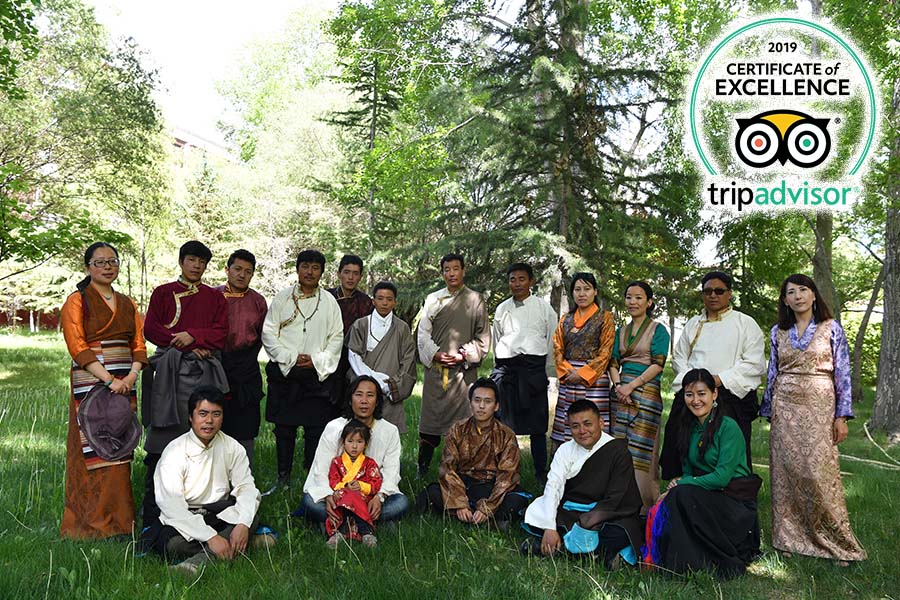
Explore Tibet with a local Tibetan Travel Agency
If you're looking to explore Tibet, starting your journey with a reputable Tibetan travel agency in Tibet is crucial. Tibet Travel & Tours is a great choice to begin your adventure with their extensive knowledge of the region and commitment to responsible tourism.
Their Tibet tour packages cater to a range of interests and budgets, making it easy to plan a trip that suits your needs. Before embarking on your tibet tour, it's essential to have the right Tibet travel information and necessary documents, including a Tibet travel permit.
The Tibet Travel Planner provided by i-Tibet travel is an excellent resource to plan your trip, including tips on what to pack, where to stay, and what to see.
For beginners, the "About Tibet" guide provided by i-Tibet travel offers a comprehensive overview of the region's history, culture, and top attractions. So, start your Tibet travel plan here with i-Tibet travel and discover the magic of Tibet for yourself.

